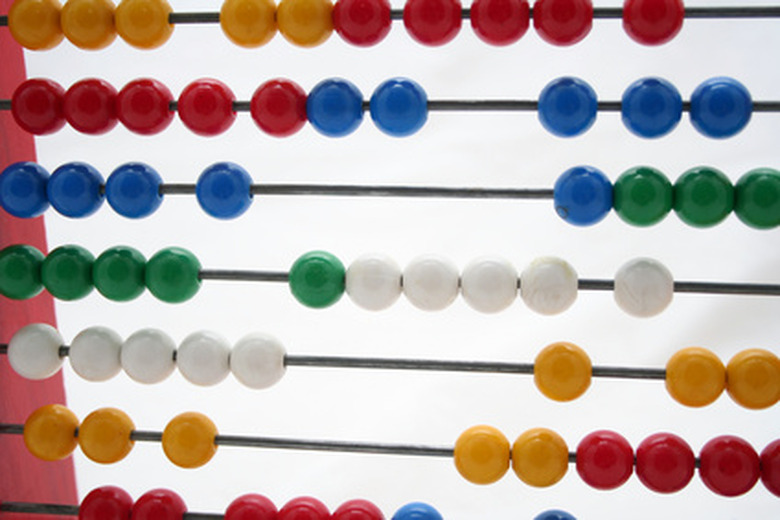How To Learn Math Multiplication And Show Your Work
Multiplication is a mathematical concept generally taught in elementary school. Although it takes time and effort to learn, memorizing the basic multiplication tables can facilitate continued academic success and allow you to learn future concepts with greater ease. When solving multiplication problems, teachers will generally ask you to show your work. There are benefits to showing your work, such as a better-organized thought process, less chance for error, and the chance to receive partial credit on a test, even if the answer if incorrect. When learning how to multiply and show your work, follow a strategic plan to ensure success.
How to Learn Multiplication
Step 1
Gain an understanding of the meaning of multiplication. Recognize that multiplication is an alternative for repeated addition. For example, 4 x 3 = 12 is the same as 4 + 4 + 4 = 12. Additionally, familiarize yourself with an array, which is a diagram of rows and columns that can be used to calculate a multiplication equation.
Step 2
Learn strategies that will enable you to figure out multiplication equations. For the two times-table, double the original number. For the fours, double the double. For example, for 8 x 4, think 8 x 2 = 16 and 16 x 2 = 32. For the fives, skip-count by fives — 5, 10, 15, 20. For the tens, add a zero to the original number. For example, 9 x 10 = 90.
Step 3
Memorize the multiplication facts. Start with the zero and one times-tables, as they are the easiest and will not take long to learn. Then move on to the twos, fours, fives, tens and nines, respectively. Last, memorize the threes, sixes, sevens and eights. Memorizing facts in this order ensures that you will first memorize the facts that have the most efficient strategies.
Step 4
Practice, practice, practice. There is no substitute for a lot of practice when mastering basic multiplication facts. Aim for ten minutes each night. Use a variety of methods, such as flashcards, interactive Web sites such as Multiplication.com or having another person ask you questions.
Step 5
Once you have memorized the basic multiplication facts, develop mental math strategies for calculating large numbers. For example, for 15 x 8, break up the number 15 into a ten and a five: 10 x 8 = 80 and 5 x 8 = 40. 80 + 40 = 120, so 15 x 8 = 120.
How to Show Your Work
Step 1
Draw a diagram if it helps you figure out the problem or equation. For example, for the equation 4 x 5, draw an array with four columns and five rows, and subsequently use skip-counting to count the rows.
Step 2
Write each step as you complete it. According to Stan Brown of Tompkins Cortland Community College, showing your work means writing down enough information so that someone can see exactly how you came up with your answer. For example, if a multiplication problem involves three separate steps in order to calculate the answer, record all three steps. Writing down this amount of information is sometimes frustrating for a student who can easily calculate an answer in his head, but it increases the chances that he will earn partial marks for completing the correct steps, even if the answer is incorrect.
Step 3
Reread the question to ensure that the answer seems logical and recheck your work. Often, students get caught up in solving a problem and end up calculating a piece of information that was not asked for. Rechecking the question and your work will decrease the likelihood of this happening.
Things Needed
- Computer with Internet access
- Flashcards
- Pencil and paper
Cite This Article
MLA
Gray, Shelley. "How To Learn Math Multiplication And Show Your Work" sciencing.com, https://www.sciencing.com/learn-math-multiplication-show-work-7320579/. 24 April 2017.
APA
Gray, Shelley. (2017, April 24). How To Learn Math Multiplication And Show Your Work. sciencing.com. Retrieved from https://www.sciencing.com/learn-math-multiplication-show-work-7320579/
Chicago
Gray, Shelley. How To Learn Math Multiplication And Show Your Work last modified August 30, 2022. https://www.sciencing.com/learn-math-multiplication-show-work-7320579/
